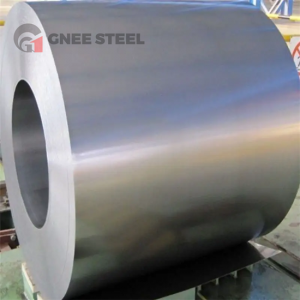Silicon Steel
Hot Dip Silicon Coating Steel Coil
In the world of modern engineering, materials play a pivotal role in shaping the technological landscape. One such remarkable material that often goes unnoticed but is essential to countless applic...
DESCRIPTION
In the world of modern engineering, materials play a pivotal role in shaping the technological landscape. One such remarkable material that often goes unnoticed but is essential to countless applications is silicon steel. Silicon steel coils, also known as electrical steel or transformer steel, are at the heart of many electronic and electrical devices. These unassuming coils possess unique properties that make them indispensable in converting and transporting electrical energy efficiently. This article delves into the intricacies of silicon steel coils, highlighting their composition, manufacturing process, applications, and significance in our daily lives.
Silicon steel is a ferromagnetic alloy predominantly composed of iron with varying levels of silicon, and occasionally small amounts of other elements like aluminum and carbon. Silicon is the key player here, as its addition imparts the alloy with remarkable magnetic properties. The presence of silicon enhances the material’s electrical resistivity, permeability, and reduces its hysteresis loss and eddy current losses. These properties are vital for minimizing energy wastage and heat generation when the material is subjected to alternating magnetic fields, making silicon steel ideal for a wide range of electrical applications.
The production of silicon steel coils involves a complex series of processes to achieve the desired magnetic properties. The first step is melting the raw materials, including iron and silicon, in a furnace. The molten metal is then cast into thin slabs, which are subsequently rolled into thin sheets. A critical stage in the manufacturing process involves annealing, where the sheets are heated and then slowly cooled. This controlled cooling helps in aligning the crystal structure of the material, leading to improved magnetic properties.
After annealing, the sheets are cut into precise dimensions and then coated with insulating materials to prevent the buildup of eddy currents. The insulation coatings can be organic or inorganic and play a vital role in reducing energy losses when the material is subjected to changing magnetic fields.
| Coating | 50-180g/m2 |
| Coating Type | 90%aluminum and 10% silicon |
| Certificate | ISO9001:2008,ISO14001,SGS |
| Market | North/South America,Asia,Africa,Europe,Mid East,ect |
| Payment | 30% TT for deposit and the balance against the copy of BL width 7 days |
| Packing | waterproof paper is inner packing,galvanized/coated steel is outer packing, side guard plate, then warpped by seven steel belt or as clients’ requirement |
| Port | Tianjin |
| Delivery | 10-25 days after receipt of deposit |







